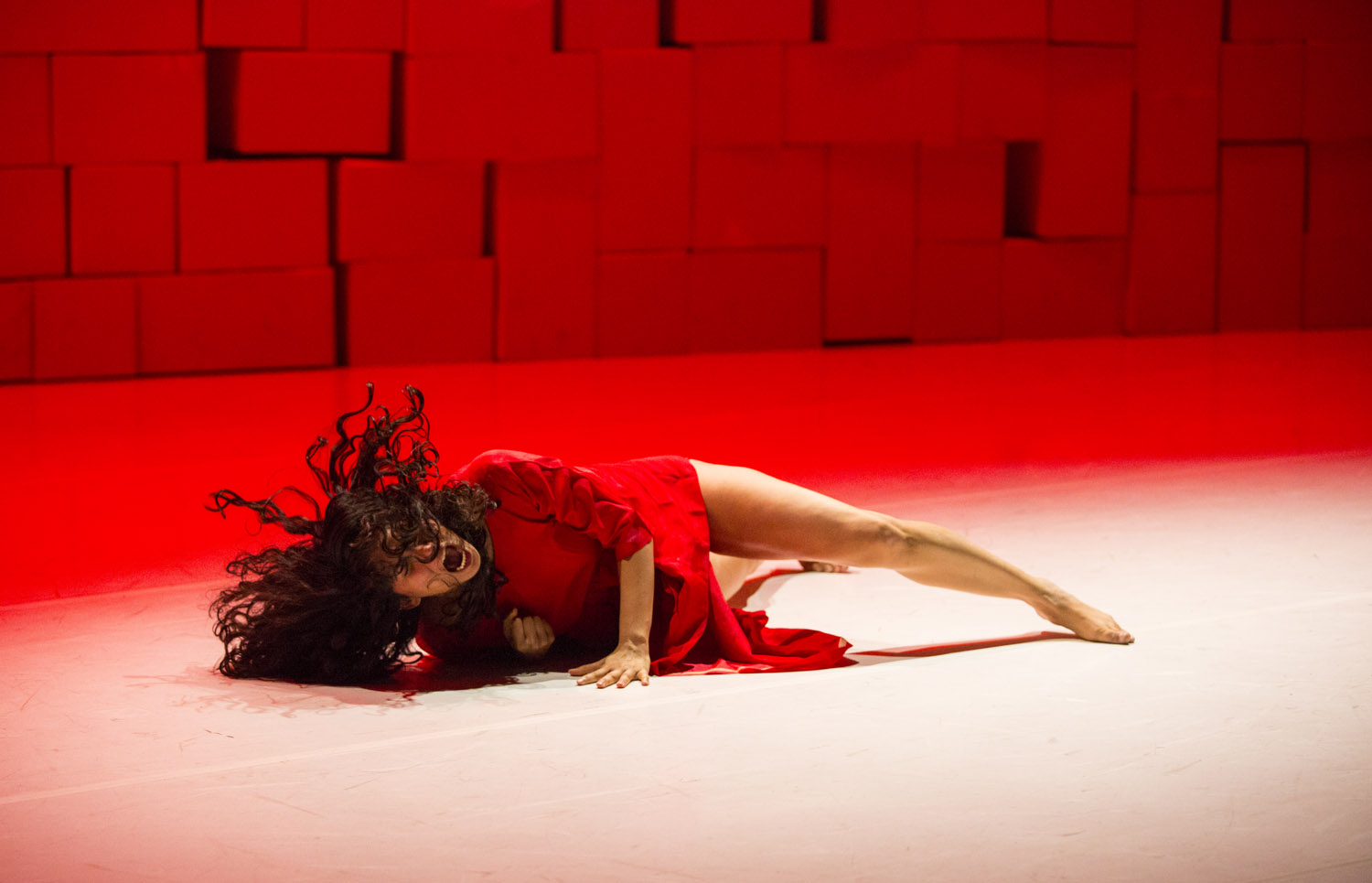On Oct. 22, Guggenheim Award-winner and Seattle based choreographer, Pat Graney and her company used dance to examine the world of women and rage in Kasser Theater. Through interviews with female family and friends across generations, Graney began her exploration of the collective feminine mind. What she found was simmering anger underneath the surface. Women are just as capable of rage as men, so how are they to express this in their culture?
Girl Gods drew from stories of women in the late 20th century. Short scenes included a little girl with a doll, an aproned woman stuffing a chicken, a group of women eating an invisible amount of food and a woman squeezing into a toddler-sized outfit. Themes of emotional suppression and sacrifice threaded the segments of the 70-minute performance together. With background in writing, visual art, movement and performance, Graney created something that did not resemble a traditional play at all. A rock music number followed by a silent movement piece left many viewers with no idea of what was to come next. From the looks of the audience, some enjoyed this unpredictability more than others.
Girl Gods openly criticized and attacked several societal norms. More specifically, it attacked the culture that is designed to oppress women. In the show, we see how a culture that dictates a woman’s occupation, fashion, eating habits and much more transforms into a pervasive and threatening entity, a lifestyle that would be as uncomfortable as wearing clothing for toddlers or not being able to earn a living on your own. The bodies of the dancers were dramatically emphasized through the use of costumes and nudity. The women wore dresses that were revealing and/or ultra-feminine to draw attention to the female sex.
What was exemplary about Girl Gods was its communication of these themes through movement. The dancers were highly skilled and flexible in their performance. However, on all nights, the audience had mixed feelings of the piece.
Domestic violence, eating disorders and isolation made Girl Gods quite dark at times. This is where theatre gets interesting because messages reached the audience without dialogue on stage. The only actual talking in the show were short audio clips of interviews with participants in the project—and these were extremely fragmented.
Beneath the choreography of the show, the audience could find a million stories. It would be incredibly difficult to pin down an agreed-upon meaning, but what is agreed is that movement is unspoken language. Whether you appreciated Graney’s display or not, Girl Gods brought a new style of performance art to the Kasser.



